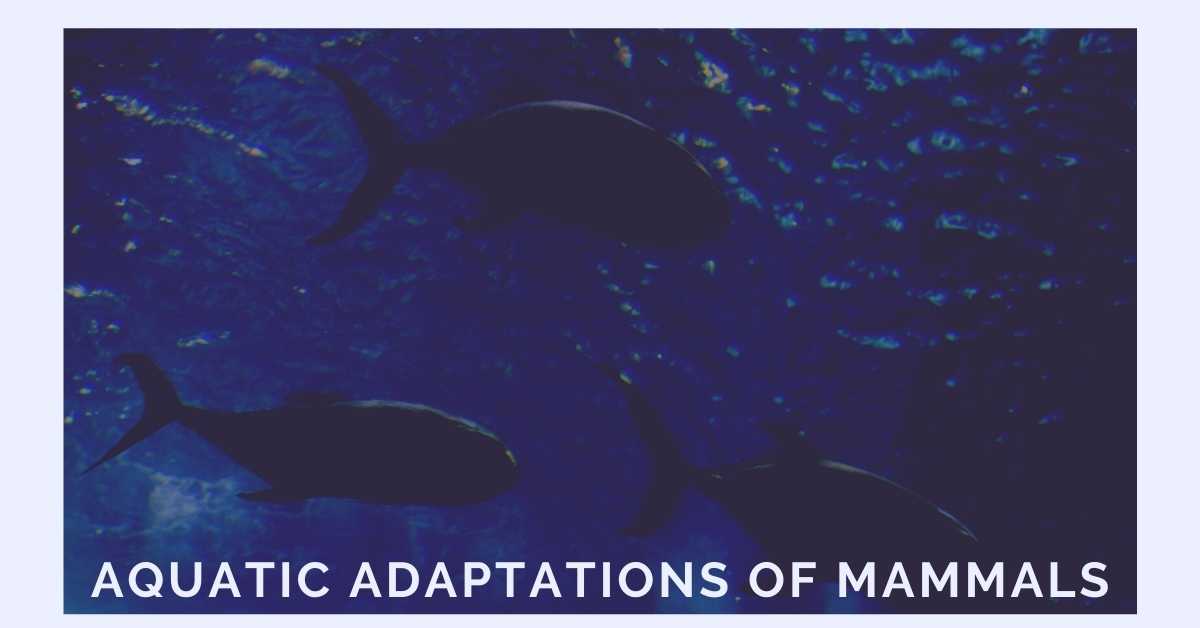There are many animals that have adapted to living in water, but mammals have evolved a range of traits that give them a competitive advantage in the water. The aquatic adaptations of mammals are more diverse than the adaptations of any other group of animals. Mammals can be found in all kinds of water bodies, from rivers to oceans. From seals to sea lions, these animals have a variety of adaptations that help them thrive. These animals have evolved a range of abilities that give them an advantage in water.
Some mammals have lost their fur and developed blubber to insulate themselves against cold water. Others have adapted to live exclusively underwater by sealing their nostrils shut and holding their breath for long periods of time. There are even some mammals who can hold their breath for more than 20 minutes underwater! Here are some fascinating ways that mammals have evolved to live in water.
How do mammals adapt to water?
The aquatic mammals have developed a range of adaptations to suit their particular aquatic environments. Mammals are able to hold their breath for long periods of time. Some mammals have developed an extra layer of blubber, which helps them to live in cold water. Other mammals have developed a series of adaptations that give them an advantage underwater, including seals who have lost their fur and developed a more streamlined body shape.
Adaptations for aquatic mammals include fur loss, blubber and more
Fur Loss
The majority of mammals use fur to keep themselves warm. However, in water, fur actually insulates the animal and makes them too buoyant to swim. Fur loss is a common adaptation to water for mammals.
Blubber
Blubber is another adaptation to water. It helps insulate the body against the cold. It can be found on seals, sea lions, and whales.
Mammals that live underwater
There are numerous mammals that live underwater. These aquatic mammals have developed adaptations such as sealed nostrils and holding their breath for long periods of time.
For example, the manatee is an aquatic mammal that uses its flippers to swim and can hold its breath for up to 20 minutes underwater. The dugong is a similar animal, and is one of the only mammals that can hold its breath for more than four minutes!
There are many more mammals that have aquatic adaptations
As humans continue to encroach on their habitats, many mammals are adapting to live in water.
For example, some seals and sea lions have lost their fur and developed blubber to help them stay warm in water. Others have adapted to live underwater by sealing their nostrils shut and holding their breath for long periods of time.
The adaptations of mammals to live in water are diverse and fascinating! There are far too many to list here, but it’s worth mentioning that humans have evolved adaptations for living in water as well. For example, we can hold our breath for up to 5 minutes without breathing. It’s pretty amazing what mammals can do under water!
Conclusion
In conclusion, aquatic mammals have evolved numerous adaptations which enable them to survive in water. Not only that, aquatic mammals have evolved additional adaptations which enable them to live on land. For example, sea otters have fur that is 40% fat! That means that when a sea otter walks on the beach, it insulates itself with a layer of blubber against the cold. In fact, when a sea otter is not foraging for food, it will often remain in the water for long periods of time to conserve energy. This allows the animal to lose up to 90% of its body heat through its thick underlayer of fat. However, when a sea otter is foraging for food, it will often walk up onto the beach to get out of the water and sun itself. At this time, the sea otter peels off its blubber and exposes its black skin to the air. This enables the otter to lose up to 60% of its body heat through its black skin and thereby maintains a constant temperature within its body. When a sea otter is in water, it has an internal temperature of only 78° F (25° C). However, when a sea otter is on land, its body temperature can vary between 80° F and 120° F (26° C and 49° C). That is why when you see a sea otter on a beach, it will be covered from head to toe with a thick layer of blubber.
In finale, aquatic mammals are the only mammals that have evolved adaptations for life in water. Therefore, it should come as no surprise that they possess many physical characteristics which make them particularly well adapted to life in water.

